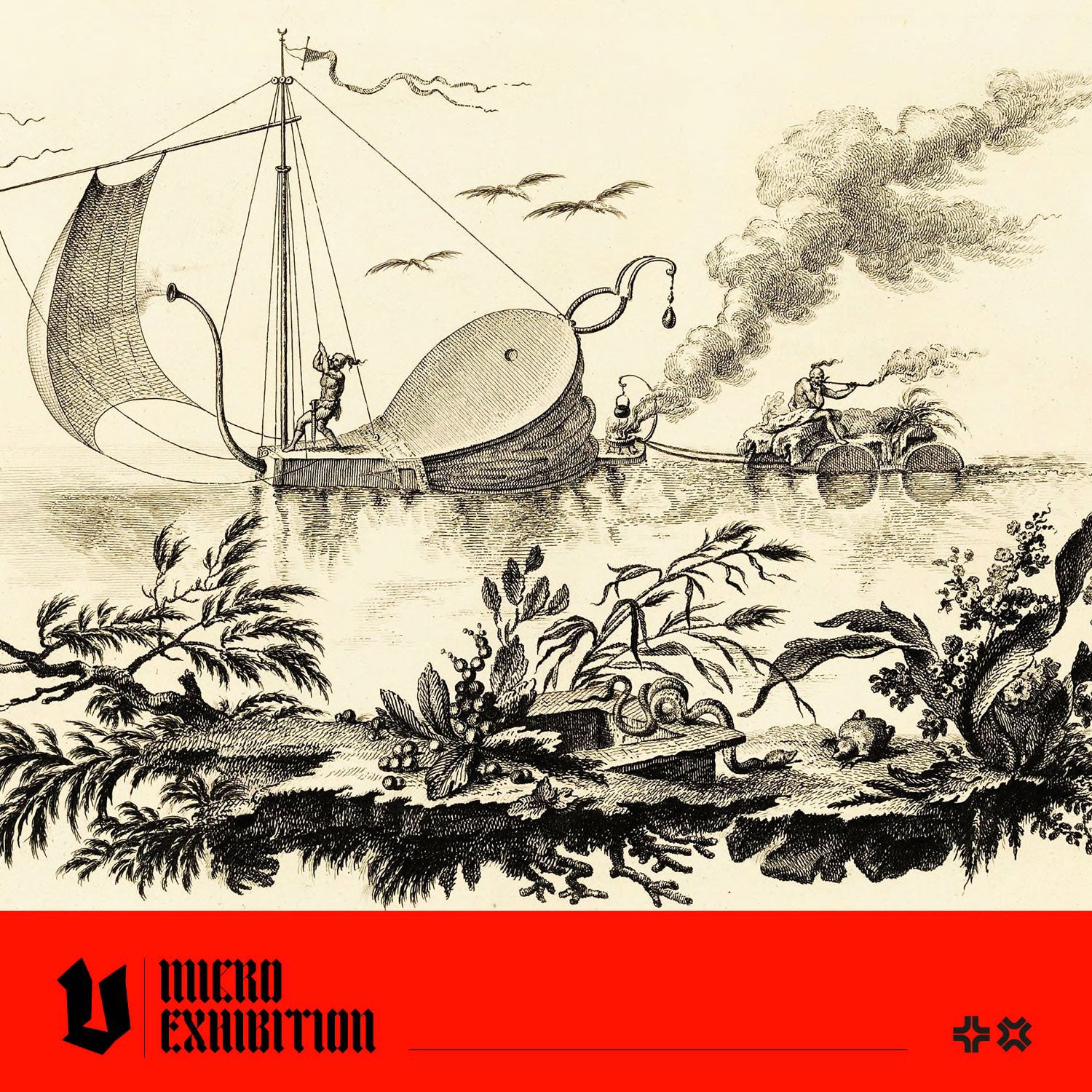Introducing Filippo Morghen: The Visionary Engraver Whose Imagination Travelled to the Moon
Italian printmaker Filippo Morghen created a series of surreal engravings depicting a fictional journey to the moon, blending scientific curiosity with whimsical fantasy. His prints show pumpkin houses in trees, giant butterflies, and strange machines. At Vault Editions, we’re drawn to forgotten works like Morghen’s that inspire imagination and creative reinterpretation. This article explores his creative vision and considers why it still resonates with artists today. Let's go!
What Was Filippo Morghen's "Collection of Most Remarkable Things?"

Frontispiece of '' A Collection of the Most Remarkable Things Seen by Sir Wilde Scull and by Mr. de la Hire, on Their Famous Voyage from the Earth to the Moon.''
Around 1766, Filippo Morghen published a curious set of ten prints under the title "A Collection of the Most Remarkable Things Seen by Sir Wilde Scull and by Mr. de la Hire, on Their Famous Voyage from the Earth to the Moon." This set of fantastical images describes an imaginary trip to the moon, where the passengers encounter moon dwellers living in pumpkins, flying on serpentine butterflies and hunting rodent creatures in enormous mousetrap-like contraptions. These images depict the moon's inhabitants using colonial-era tropes, likely influenced by European views of Indigenous peoples as 'exotic'. These capriccio prints blended fantasy with reality - combining familiar details in the landscape and architecture with far-fetched elements, like a bellows-powered sailing boat, or distorting size and scale, with snails the size of small dogs and gourds large enough for people to live in.

Plate 1. of ''A Collection of the Most Remarkable Things...''
Why Filippo Morghen's Work Matters to Artists Today

Plate 2. of ''A Collection of the Most Remarkable Things...''
Morghen's unusual engravings combine technical drawing, whimsical fantasy, and a sense of narrative that invites interpretation. His work offers a rich source of inspiration for artists and designers and invites a return to maximalist imagination, where technology, fantasy, and dreams collide.
- Tattooers might find inspiration in the surreal animal designs.
- Illustrators can draw on his visual storytelling and mechanical motifs for sci-fi narratives or whimsical stories.
- Designers and collagists will appreciate the unusual juxtapositions and playful scale of his compositions.

Plate 3. of ''A Collection of the Most Remarkable Things...''
Who Was Fillipo Morghen?
Filippo Morghen (1730-1808) worked in Naples as an artist, engraver and printmaker. He was known for his portraits of some members of the prominent Medici family. He contributed engravings to the ''Antiquities of Herculaneum'', an eight-volume work describing the architecture and artefacts discovered during the Bourbon excavation of the ruins of Roman cities along the Napoli coast. In his later years, Morghen worked for the Royal Printing House of the Kingdom of Naples.

Plate 4. of ''A Collection of the Most Remarkable Things...''
Different Names, Same Voyage: Why This Work Has Three Titles
When the original volume was released around 1766, its title was "A Collection of the Most Remarkable Things Seen by Sir Wilde Scull and by Mr. de la Hire, on Their Famous Voyage from the Earth to the Moon." This version imagined the 18th-century astronomer and mathematician Philippe de la Hire as one of the passengers. In the second printing of approximately 1767, the title and text on the frontispiece were changed to reference Giovanni Wilkins, who was Bishop John Wilkins, a founder of the Royal Society and author of ''Discovery of a New World; Or, a Discourse Tending to Prove, That 'tis Probable There May Be Another Habitable World in the Moone'' (1638).

Plate 5. of ''A Collection of the Most Remarkable Things...''
Scholar Grant McColley believes the change was because de la Hire didn't think the moon could sustain life, but Wilkins thought it was populated and considered the likelihood of a passage to it. The third edition is dedicated to Sir William Hamilton, the British ambassador to Naples from 1764 to 1800, and was possibly published around 1785.

Plate 6. of ''A Collection of the Most Remarkable Things...''
Vault Editions and the Rediscovery of Obscure Imagery
At Vault Editions, we specialise in bringing forgotten visual treasures back into the hands of artists and image-makers. Filippo Morghen's work fits squarely within our mission: to unearth the arcane, the intricate, and the extraordinary to provide contemporary creators with reference material that pushes the boundaries of their imagination. If you're drawn to Morghen's world of moon machines and animal oddities, stay tuned; we'll feature his work in future pictorial archives alongside other rare and unusual engravings.

Plate 7. of ''A Collection of the Most Remarkable Things...''

Plate 8. of ''A Collection of the Most Remarkable Things...''

Plate 9. of ''A Collection of the Most Remarkable Things...''




